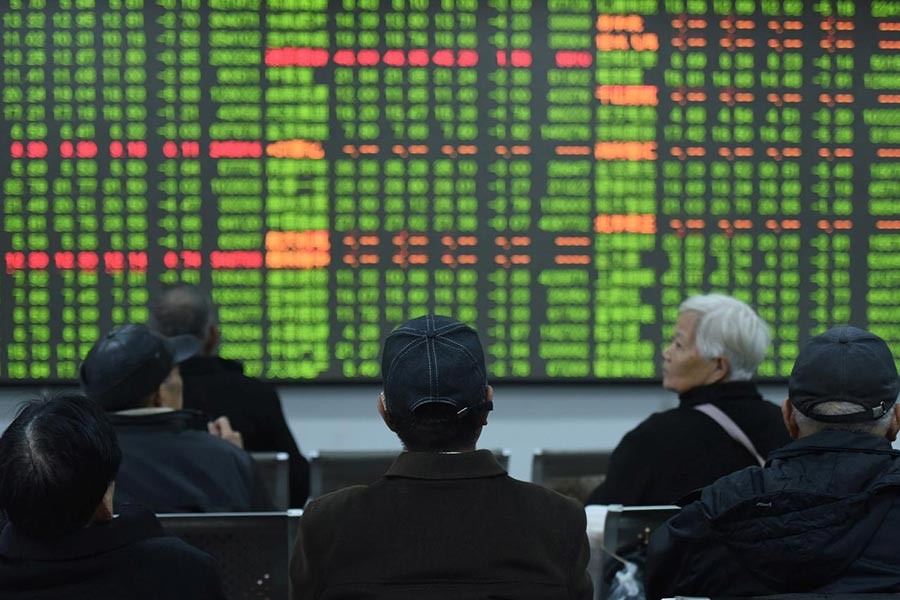Asian share markets followed Wall Street higher on Tuesday as China's factories struggled to re-open after an extended break, though analysts warned investors might be underestimating how economically damaging the challenge was likely to be.
The death toll from the coronavirus epidemic in mainland China climbed past 1,000 on Tuesday, though the number of new confirmed cases fell.
Investors seemed to be hoping for the best and MSCI's broadest index of Asia-Pacific shares outside Japan rose 0.9%, with Shanghai blue chips .CSI300 ahead by 0.8%.
Japan's Nikkei .N225 was closed for a holiday, although Nikkei futures NKc1 traded 0.8% firmer. Futures for the EUROSTOXX 50 rose 0.7% and the FTSE 0.5%.
E-Mini futures for the S&P 500 ESc1 added 0.3%, after a late jump on Monday took Wall Street to record highs. The Dow .DJI ended up 0.6%, while the S&P 500 .SPX gained 0.73% and the Nasdaq .IXIC 1.13%.
The gains came even as the World Health Organization (WHO) warned the spread of the virus among people who had not been to China could be "the spark that becomes a bigger fire".
In China, factories were slow in reopening after an extended Lunar New Year break, leading analysts at JPMorgan to again downgrade forecasts for growth this quarter.
"The coronavirus outbreak completely changed the dynamics of the Chinese economy," they said in a note.
They assumed the contagion would peak in March and factories would slowly resume opening this month. In this case, growth would brake sharply to around a 1% annualized pace in the first quarter, before rebounding to 9.3% in the second.
Should the contagion not peak until April, the economy could contract in the first quarter, with a rebound spread over the second and third quarters, the JPMorgan analysts said.
UNDERESTIMATING THE DAMAGE
Analysts at Nomura said measures of returning workers and passenger traffic flows within China suggested the virus had "a devastating impact on China's economy in January and February."
"We are concerned that global markets thus far appear to be significantly underestimating the extent of disruption inflicted by the virus," they wrote in a note.
The risks are such that investors are wagering on more stimulus from Beijing - even though conventional measures in such cases can do little to reverse a sharp slump in demand - while a host of other central banks are under pressure to safeguard their economies with cheaper loans.
Markets are pricing in almost 40 basis points of easing this year from the Federal Reserve and again slightly inverted the Treasury yield curve to reflect the danger of recession.
Fed Chair Jerome Powell appears before Congress on Tuesday to begin two days of testimony and is expected to reiterate that the U.S. economy is doing well but that rates can stay low given subdued inflation.
The relative outperformance of the U.S. economy is keeping the dollar well supported, with the euro slipping to a four-month low at $1.0906 EUR=. The British pound GBP= was last at $1.2913 having touched a two-month trough of $1.2870.
Against a basket of currencies, the dollar was again at its highest since mid-October at 98.858.
The dollar was steadier on the Japanese yen, which benefits from being a safe haven of its own, and last stood at 109.81 JPY=.
Risk aversion initially helped lift gold to its highest for a week, only for the strength of the dollar to pull it back 0.25% to $1,568.61 per ounce.
Oil prices bounced a little after weeks of selling, as traders waited to see how demand in China might fare and whether OPEC could agree to trim supplies.
Brent crude futures firmed 64 cents to $53.91 a barrel, while U.S. crude rose 50 cents to $50.07.
—Reuters


